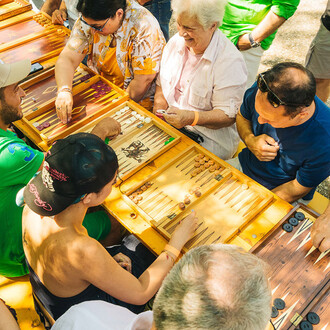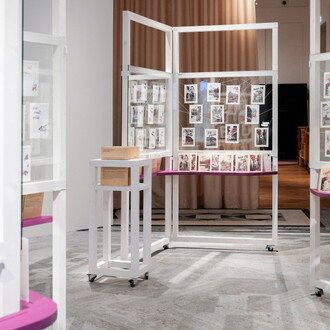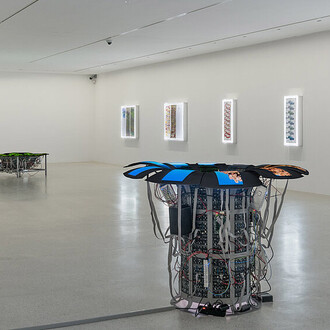Like no artist before him, Rubens created and brought to life worlds that continue to excite us. His art is full of special effects. Forms and colours seem to explode, to burst forth from his paintings. Pop Art. He sees everything with new eyes, the cosmos, mankind, their actions. Rubens quits nature and creates abstract spaces. His theatrical sense of drama recalls the cinema and he peoples this new baroque stage with heroes, deities and animals. This artist has the power to surprise us. With paintings that are capable of anything: they tell both of lovers and of pain and rage, they bring to life monstrous creatures and goddesses of beauty. He is a star. Rubens is coming!
(Stefan Weppelmann, Director of the Picture Gallery)
Peter Paul Rubens (1577–1640) was a star during his lifetime, and he remains a star today. His name is synonymous with an entire period in art history, the Baroque, but contemporary art too cannot ignore him.
The extraordinary œuvre of this artistic genius comprises large-scale altarpieces more dynamic and full of coloristic punch than anything produced by his contemporaries, as well as sensual nudes and dramatic compositions. But Rubens is also renowned for his intimate and private paintings, such as his celebrated “The Fur” now in the Kunsthistorisches Museum Vienna; it is the artist’s declaration of his love for his beautiful second wife, Hélène Fourment.
And “Stormy Landscape with Philemon and Baucis”, a painting Rubens probably began because he became interested in the problems of depicting landscape and which he continued to work on throughout his life, is a magnificent and vibrant composition.
This special exhibition invites visitors to see these and other masterpieces now in Vienna in the context of Rubens’ preparatory drawings, oil sketches, panel paintings and canvases.
The works on show – among them around seventy loans from the world’s foremost collections such as the State Hermitage Museum in St. Petersburg, the Prado in Madrid or the National Gallery of Art in Washington D.C. – have been carefully selected to create juxtapositions and confrontations that document how Rubens worked, how he created his vivid, carefully contrived artworks.
The show thus focuses on the most fascinating aspect of Rubens’ art: his critical analysis and use of external sources and ideas. With the help of selected examples the exhibition illustrates how Rubens was inspired by other artists, by both contemporary and Renaissance compositions. Throughout his life he also entered into a creative dialogue with ancient and Renaissance sculpture.
Using these extrinsic formulae as his starting point he evolved his own ideas, expressing them in rapidly executed, amazingly modern pen drawings, which, in turn, served as the basis for his more elaborate oil sketches. In this way Rubens appropriated the art of others in at times surprising ways, turning it into something entirely his own and creating a huge visual reservoir that continually engendered new ideas, so that, for example, the appearance and pose of some classical centaur that Rubens had studied in Rome ends up serving as the model for a depiction of Christ. It is truly amazing how Rubens is able to conflate the Saviour’s figure with that of a composite mythological creature devoured by desire to create a convincing erotic male body. It is such fascinating conflations that form the basis for the powerful emotions generated by Rubens’ works.
However, these sources and transformative processes are generally hidden and are revealed only on closer inspection: in the exhibition visitors are invited to identify and discover these artistic quotes in Rubens’ compositions. By comparing the artist’s model or inspiration and his new creation visitors will be able to appreciate and comprehend Rubens’ unrivalled power to change and re-invent.
















